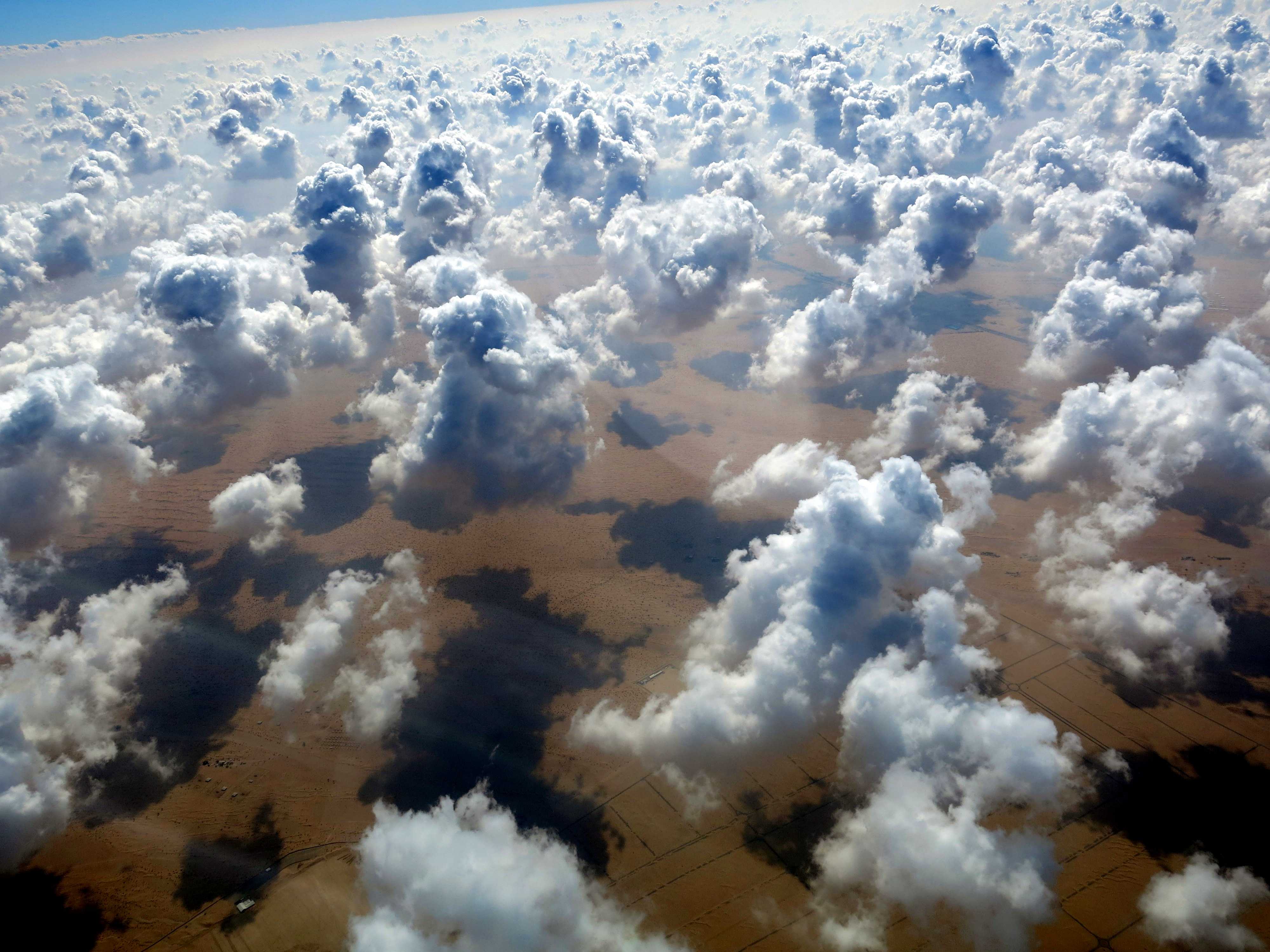Cumulus congestus
(Section 2.5.2.9.3)Below the cloud. Cumulus congestus has great contrasts of luminosity. Viewed from below, it has a relatively dark base, which is nearly horizontal and fairly often ragged. Under the base, visibility is good, except during precipitation. Turbulence is usually strong.
Within the cloud. Cumulus congestus is composed mainly of water droplets, though ice crystals may form where the temperature is well below 0 °C. Raindrops may occasionally be observed. Visibility is generally very poor, but varies considerably. There may be considerable icing. Ascending currents sometimes exceed 10 m/s (33 ft/s), and turbulence is often severe. Electrical discharges may occur.
Above the cloud. Viewed from above, sunlit Cumulus congestus is more dazzling than the other types of Cumulus. The upper parts, with well-defined and strongly shaded projections and domes, have the shape of large cauliflowers, huge chimneys or towers. Their tops, which may reach widely differing levels, sometimes emerge from a layer of haze or from a fairly continuous layer of cloud.
Veils (pileus or velum), sometimes connecting several clouds, may frequently be observed.




